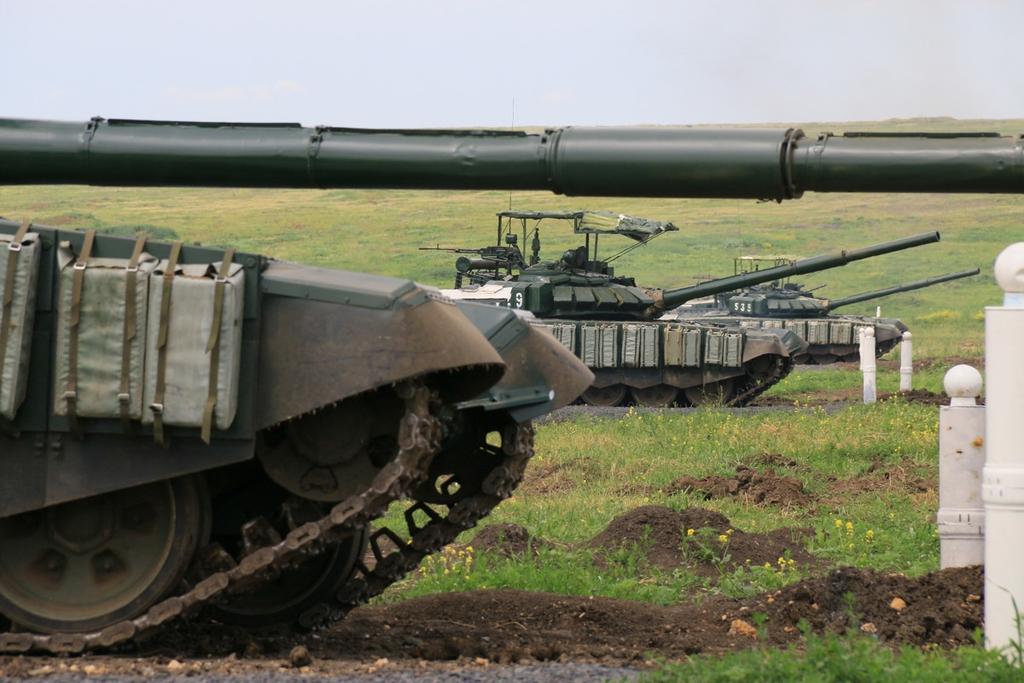lyle6 wrote:The whole point of the T-72B3 upgrade is that it addresses the two most glaring issues of Soviet legacy tanks: the lack of effective night-fighting capability and antiquated comms. gear, providing what is otherwise an obsolete vehicle with a fighting chance against most threats on the battlefield while making it affordable enough that it could actually be bought en masse in a short period of time - and they've bought quite a lot.
Let's not complicate things, numbers still matter in warfare especially land combat. After all even the most protected NATO tank is only resistant from the front; everywhere else is fair game. On the tactical level, if you can secure absurd force ratios with significantly cheaper and more importantly easier to deploy units you can just outright surround your enemy and attack him from multiple sides, bypassing the protection afforded by the heavy frontal armor. If you have have more than enough tanks that you outnumber what the enemy has in theatre several times you can also just outmaneuver the enemy's fighting elements and strike at his vulnerable communications. With no fuel and ammo even the very best of NATO tanks would die just like the rest of them, abandoned or set alight by their own crews as they are forced to retreat on foot.
That brings another interesting question. Were the Soviet tanks really inferior when compare FCS and comm?
The peaking achievement of the Soviet tank industry used to be a T-80UK model.
It was a command version, as K states for "komandirski", more costly, delivered in small numbers, still what we have there at the end of 80s ?
Well, we have a tank with Agava 2 thermal sight for a gunner, passive light magnification channel for the commander, improved communication, and last but not least, Ainet programmable round. Agava installed was a follow-up of first-gen Agava, with 50 elements matrice, that Soviets had back in the early 80s. Not implemented for serial use due to cost, the fact that work on improved 128 element matrice was already running, and general problems with establishing an industrial base needed for serial production of it.
If one doubts if the Soviets were able to make a TI sight back in 80s, well, the answer is very simple.
A PRP-4M recon vehicle with 1PN71 NVS was delivered serial to ground forces starting from the early 80s, and its TI channel granted a 3000m detection and 1300m recognition ranges (some states 2000).
As we realize, that it is not a matter of competency and/or ability, what left is a doctrinal approach.
All Soviet tanks of the 80s were produced or modernized for use of a combined active/passive light magnification. In general, a range of passive detection of a tank-sized target was in the 1200-1500m range. For European theatre of operation, it was more than enough, as the line of sight does not exceed 1000m in most places in Europe.
What we have got on the opposite side? Well, an EMES 15 system of Leo2 could operate for approx. 20 minutes. After that, had to be switched off for cooling. Any TI observation channel for a commander was applied to A5 version only, and we are in the late 00s already, 20 years after 80UK. Its granted parameters are no better than that 80UK possessed.
If the price tag would be accepted by the Soviet decision-makers, they could equip the tank fleet with tanks on pair with the opponents in both FCS and comm status. Still, those would be much better protected, much smaller, much lighter, and possessing some really important tactical gains, like Brod river crossing system, gun launched ATGMs, or Ainet programmable round.
Who has even heard about Ainet round? It used to be Israel, who operated the first programmable ammo for 120mm tank gun, right? Ze Wezt fanboys were driving crazy about that back in 90s, so it is impossible that Russkies got it a decade earlier!






